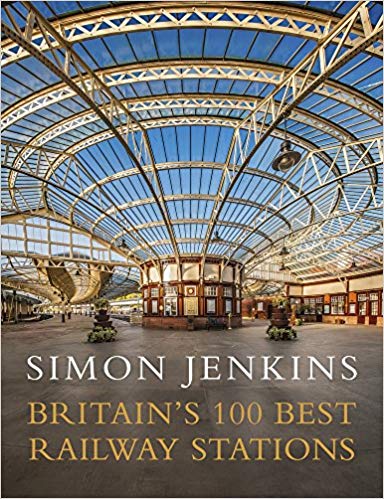FROM ONE STATION TO THE NEXT
Author and railway enthusiast Sir Simon Jenkins travels the length and breadth of Britain to select one hundred of his favourite railway stations. Jenkins has meticulously researched his subject and does a first-rate job conveying the story of Britain’s railway network from the mid-1830s/1840s to the present. No matter what their size or how many passengers pass through their concourses, these stations have their own unique stories to tell and the clues can be found in the designs, the architecture, the location…in fact wherever the eye chooses to roam. The author is an excellent guide who injects his commentary with insight, personal reflections, and an expertise that befits someone of his knowledge.
Among his choices are Kings Cross, once “the poor kid on the block”, Hebden Bridge “as self-conscious as the town it serves”, Wellingborough “a gingerbread house by the master of mid-Victorian eclecticism, Charles Driver” and Boxhill & Westhumble near Dorking Surrey which lies in a dell so heavily treed that “to wander to the end of the platform is to feel lost in the woods”. The building itself is a fusion of architectural styles: French chateau, Venetian gothic, and Swiss chalet and the result is a station where to outward appearances there’s “more roof than wall, the building being composed of sweeping gables covered in layered patterns of slate.” Jenkins admits that if he ever got fed up of travelling, he would happily apply for the stationmaster’s job. Be prepared for a long wait!
Joking aside there’s more to this book than lovely photographs and the gentle musings of a train enthusiast. Although films like Brief Encounter (shot at Carnforth station in Lancashire) have romanticised the railways, we should never forget how those long, snaking lines of metal were responsible for developing Britain’s infrastructure. It was the railways that made the industrial revolution possible in the first half of the nineteenth century, and the legacy of that era remains to this day. They facilitated social and economic change, created jobs and wealth, made it easier for people to do business and connected isolated communities.
This is not a coffee table book, but a celebration of an important sector that shaped Britain’s industrial heritage.
Reviewed by Juliette Foster




